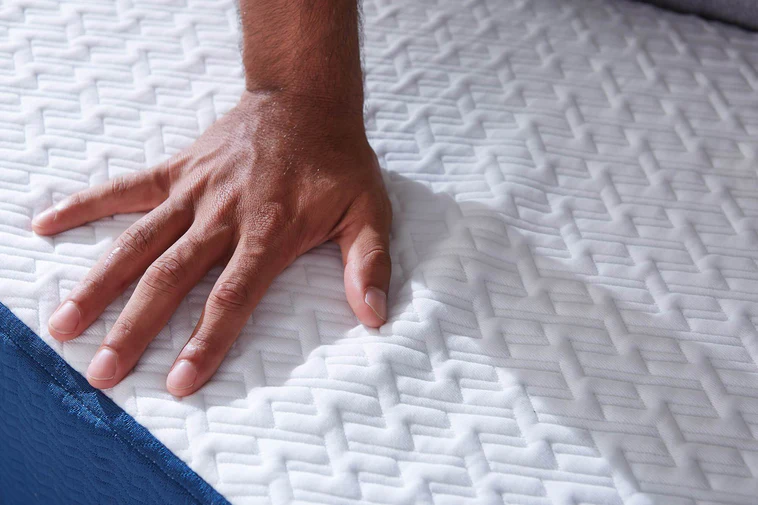Different mattresses have different lifespans; some might last for 5 years, and others might last for 10 years. It depends on the construction of the mattress and the materials used in it; however, it is crucial before choosing a mattress to consider how long it will last before showing signs of wear and tear.
Why Your Mattress Matters and How long it lasts
When it comes to the lifespan of a mattress, several factors come into play. The type of mattress you have, such as hybrid, innerspring, memory foam, or latex, can greatly impact its durability.
On average, a well-maintained mattress can last anywhere from 7 to 10 years. However, this can vary depending on the quality of materials used and the level of usage.
Factors That Affect Mattress Lifespan
Many factors can affect how long a mattress usually lasts, and taking them into account can extend the lifespan of a mattress.
Material Quality
One of the most significant factors that determines how long can you keep a mattress is the material, as some materials have better durability and a longer lifespan than others.
Original Quality
The original quality of your mattress, or the condition that you bought it in, is a crucial factor that affects how long is a mattress good for you, as a cheaper mattress with budget-friendly construction will not last as long as a luxurious, high-end mattress constructed with the best materials on the market.
Mattress Type:
The mattress type can substantially affect its longevity. High-density memory foam or polyfoam beds tend to last the longest, then latex mattresses. Lower-density foam beds wear out a bit quicker, as do hybrid models. Traditional innerspring beds generally have the shortest expected lifespan, at approximately five and a half to six and a half years.
Body Weight
Make sure to consider your body weight before purchasing a mattress, as it has a direct impact on how long beds last. If your body weight is more than your mattress can support, it will start showing signs of wear and tear, such as sagging.
Sleep Position:
The position you sleep in, as well as your body weight, will affect how quickly your mattress wears out and how many years a mattress lasts. Heavier sleepers may find that their mattresses begin to sag prematurely, while side sleepers may find excessive sagging around the hips and shoulders.
Care Routine
If you follow a consistent maintenance routine with your mattress, such as cleaning it, flipping it regularly, and following the safety guidelines of the mattress, your mattress will last longer, as maintenance is known to extend the life of mattresses.
How long does each mattress type last?
Hybrid
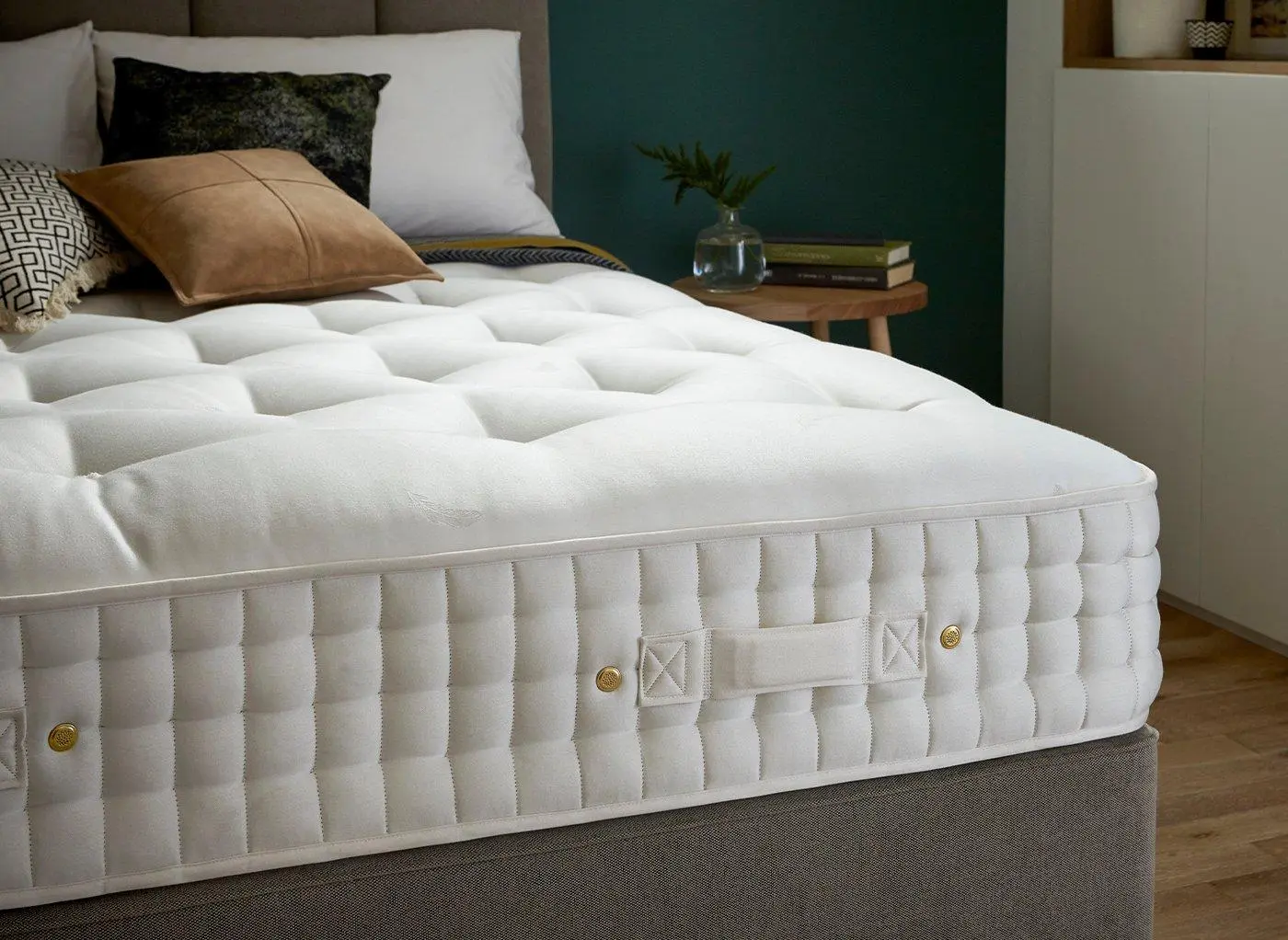
Hybrid mattresses, which combine the support of the innerspring with the comfort of memory foam or latex, are known for their longevity. These mattresses typically have a longer lifespan compared to traditional innerspring mattresses.
The combination of different materials provides enhanced durability and support, allowing them to withstand more wear and tear over time. With proper care and maintenance, a hybrid mattress can easily last 8 to 10 years.
Innerspring
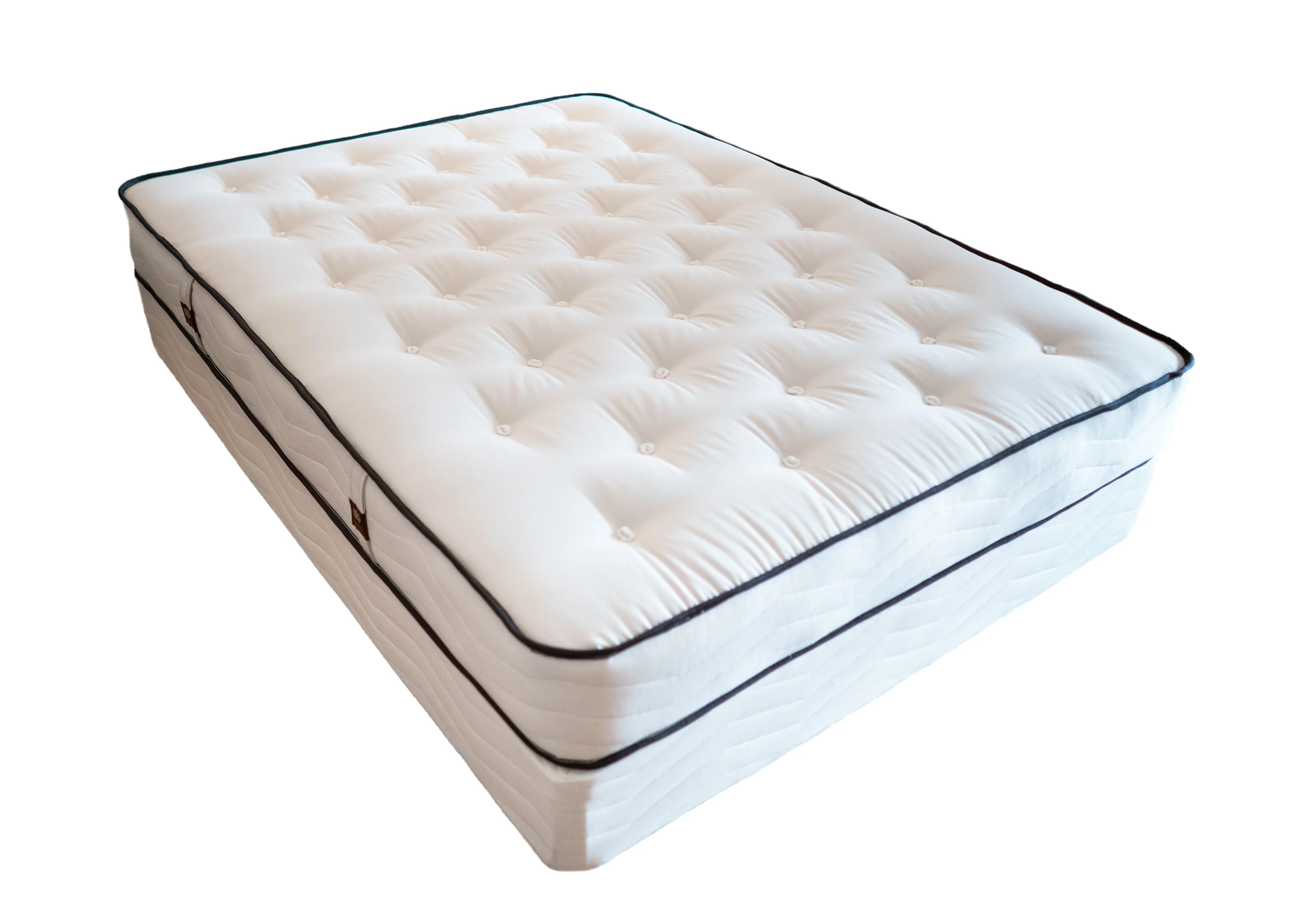
Innerspring mattresses, on the other hand, tend to have a slightly shorter lifespan compared to hybrids. These mattresses use a system of metal coils for support and are then topped with layers of padding for comfort.
While they offer great support and bounce, the metal coils can become worn out over time, leading to sagging and discomfort. On average, an innerspring mattress can last around 7 to 8 years with regular use.
Memory Foam
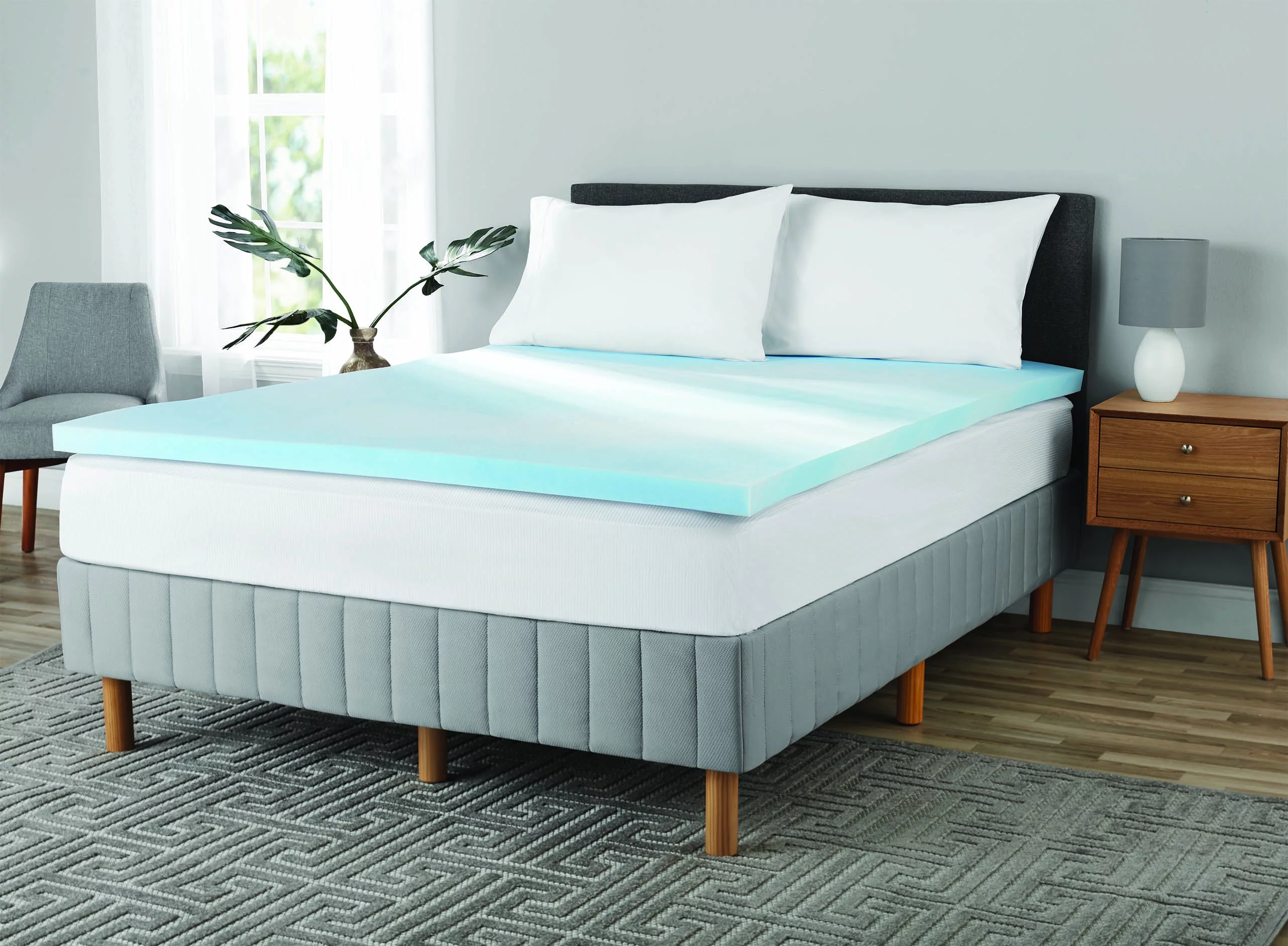
Memory foam mattresses are known for their ability to contour the body and relieve pressure points.
However, their lifespan can be affected by factors such as density and quality of foam used. Higher-density foam typically lasts longer than lower-density foam. On average, a memory foam mattress can last anywhere from 8 to 10 years if properly cared for.
Latex
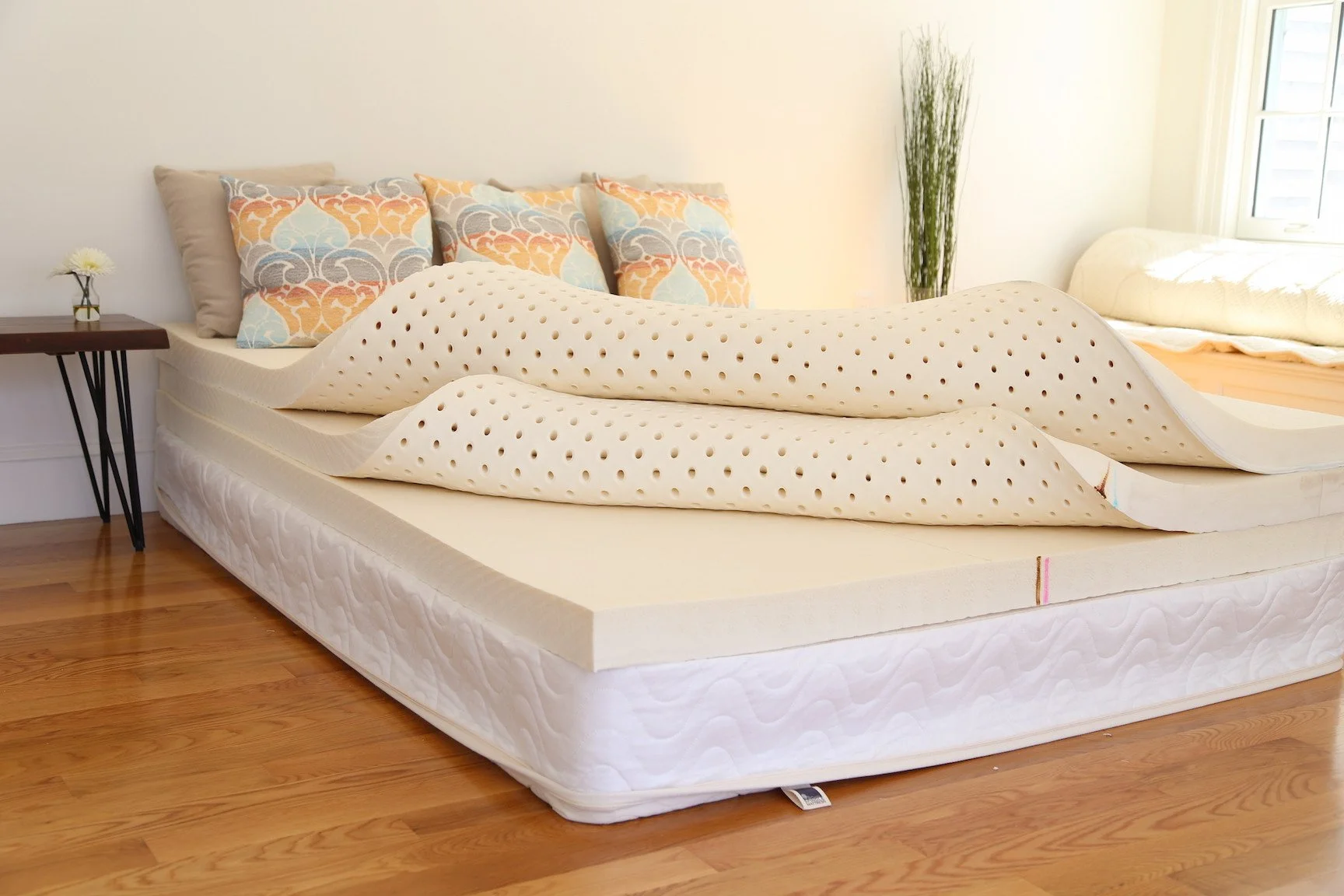
Latex mattresses are often considered a luxury option due to their durability and natural materials. Made from the sap of rubber trees, latex mattresses are known for their resilience and longevity. With proper care, a latex mattress can last anywhere from 10 to 12 years or even longer.
Signs That you Need to Replace your Mattress
Sagging
Sagging is one of the most common wear signs that show up in mattresses, and the issue with sagging is that it doesn’t distribute the body weight evenly across the mattress, which puts an unnecessary constraint on your pressure points, and this will lead to uncomfortable sleeping experience.
Joint Pain
If you find yourself waking up with aches and pains that weren't present before, especially in areas like the back, hips, and shoulders, it may be time for a new mattress, because that means that your current mattress is placing a lot of pressure on your body and doesn’t offer the right support.
Lumps or an Uneven Surface
Uneven surfaces on the mattress are one of the most obvious wear and tear signs, and just like sagging, it means that your body weight won’t be properly distributed across the mattress, which will lead to joint and muscle pain due to the excessive restraint placed on your pressure points.
Visible Tears or Rips
If you find any punctures or rips in your mattress, then you need to seriously think about replacing it, as the mattress won’t only stop providing you with the comfort it used to, but punctures in the mattress can be harmful to sleepers, especially if your mattress contains fiberglass.
For more information about fiberglass in mattresses, check out the article “Mattress Fiberglass: Everything You Need to Know.”
Waking Up Tired
If you wake up every single day feeling tired and unrested, and you didn’t used to feel that way before, then this means that your mattress stopped providing you with the support you need, and the declining support performance is usually a sign of wear and tear that happens to the mattress over time, which means that it’s probably time to change your mattress.
You Experience Night Sweats
If you experience night sweats, this could be a sign that your mattress is retaining heat and not allowing for proper airflow. As we sleep, our bodies naturally release heat and moisture. A mattress that doesn't have proper ventilation or cooling properties can trap this heat, leading to discomfort and disrupted sleep.
You Have Frequent Allergies
Mattresses can accumulate dust mites, allergens, and other irritants that can trigger allergies or respiratory issues. If you find yourself sneezing, coughing, or experiencing nasal congestion when you wake up, it could be a sign that your mattress is harboring allergens. Investing in a hypoallergenic mattress or regularly cleaning your current mattress can help alleviate these symptoms
You Feel Your Partner’s Movements More Than Usual
If you and your partner share a bed, you might want to think about getting a new mattress if their movements during the night are constantly disturbing you.
Motion transfer occurs when movement on one side of the bed is felt on the other side, causing sleep disruptions. If your current mattress doesn't provide enough motion isolation, it may be time for an upgrade. Look for mattresses that are specifically designed to minimize motion transfer, allowing you and your partner to enjoy undisturbed sleep.
Mattress Disposal
Mattress disposal is a significant concern for many individuals and businesses alike. With the increasing emphasis on sustainability and responsible waste management, it is crucial to find environmentally friendly ways to dispose of mattresses.
Recycling
One of the most effective methods is through recycling. Recycling mattresses involves dismantling them and separating the various components, such as foam, metal springs, and fabric. These materials can then be processed and reused in the manufacturing of new products. Recycling not only reduces the burden on landfills but also conserves valuable resources by minimizing the need for raw materials.
Donating
Many charitable organizations accept gently used mattresses as donations. These organizations often work with individuals and families in need, providing them with a comfortable place to sleep.
Donating mattresses not only helps those in need but also prevents them from ending up in landfills prematurely. It is important to note that when donating a mattress, it should be in good condition and free from stains, odors, and excessive wear and tear.
Some organizations may also have specific guidelines regarding mattress donations, so it is important to reach out to them beforehand.
Reusing
In some cases, mattresses can still serve their purpose with minor repairs or modifications. For example, a mattress with a sagging middle could be flipped or rotated to distribute the weight more evenly.
Additionally, mattress toppers or pads can be used to provide extra cushioning and support. Reusing mattresses not only extends their lifespan but also reduces waste and saves money.
Mattress Removal Services
Professional mattress removal services can provide a convenient solution. These services specialize in the proper disposal of mattresses, ensuring that they are disposed of responsibly and in compliance with local regulations.
Mattress removal services often have the necessary equipment and expertise to handle the bulk and weight of mattresses safely. They can also dismantle the mattresses if needed for recycling purposes.
How to Make Your Mattress Last Longer
Whether a mattress is supposed to last for 7 or 10 years, or whatever the expected lifespan is, that doesn't mean it has to reach the end prematurely. With the tips mentioned below, you can learn how to make your mattress last longer than its average lifespan.
Use the Right Bed Frame
The bed frame that you put your mattress on can shorten or extend the lifespan of your mattress, so make sure that your support base fits the mattress and provides sufficient support for it.
Invest in a Mattress Protector
To keep your mattress clean for a longer time, use a mattress protector, which will prevent your mattress from accumulating any dust or stains and will also act as a barrier between your body and the mattress.
Flip and rotate your mattress
One of the best preventive measures that you could follow to prevent sagging is flipping your mattress every once in a while to distribute the pressure of your body on the mattress surfaces. But some mattresses aren’t flappable, so make sure that your mattress can be flipped before you do so.
Regular mattress cleaning
It is crucial to maintain regular mattress cleaning and to wipe up stains as soon as possible. It keeps moisture out of the mattress and gets rid of dust and allergen accumulation.
Limit Jumping or Rough Use
If you have children or pets, try to limit their jumping on the mattress as much as possible, as jumping can particularly damage the mattress and decrease its lifespan.
FAQs
What type of mattress lasts the longest?
Memory foam mattresses are known for their longevity, as they are made from high-density foam that is designed to retain its shape and support for many years. Additionally, latex mattresses are also known for their durability, as they are made from natural materials that are resistant to sagging and wear. Both memory foam and latex mattresses can last up to 10 years or more with proper care and maintenance.
How do I know if a mattress is worn out?
If your mattress starts to provide the same amount of comfort it used to provide and you start waking up feeling tired and start to get joint pain, then that’s a sign that your mattress is worn out. Also, visual inspection can be beneficial in determining if your mattress is worn out or not, if it’s sagging, has an uneven surface, or has punctures.
What are the effects of sleeping on an old mattress?
Joint and muscle pain, overheating, excessive motion transfer, and not feeling well-rested after you wake up are some of the most common effects that you’ll feel if your mattress is worn out or damaged.
When should I replace a mattress?
Knowing when to replace a mattress and how long to keep it is essential for maintaining a healthy sleep environment. Generally, mattresses should be replaced every 7–10 years. However, there are a few signs that indicate it may be time for a new mattress, like aches or restless sleep and visible wear like sagging or lumps, which indicates it's time for a new mattress. Replacing your mattress ensures comfort, proper spinal alignment, and restful sleep.
Conclusion
The lifespan of a mattress depends on various factors, including type, quality of materials used, and level of usage. Hybrid and latex mattresses tend to have longer lifespans compared to innerspring and memory foam mattresses.
However, with regular care and maintenance, such as rotating the mattress regularly and using a mattress protector, you can extend the lifespan of any mattress and ensure you get the most out of your investment.
Jessica H.
Jessica is a reviewer, writer, and sleep enthusiast at Sleepiverse. Jessica graduated with her master's degree in Nursing research and education. She is a registered nurse and currently works in the Intensive Care Unit. Since becoming a nurse, Jessica has worked the night shift, which means a disrupted sleep schedule. Knowing she needed to function at her best while caring for patients at night, she spent a lot of time researching how to sleep well with a difficult schedule.


